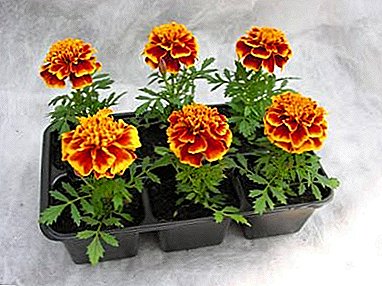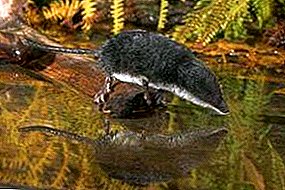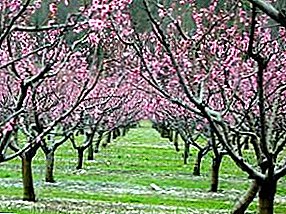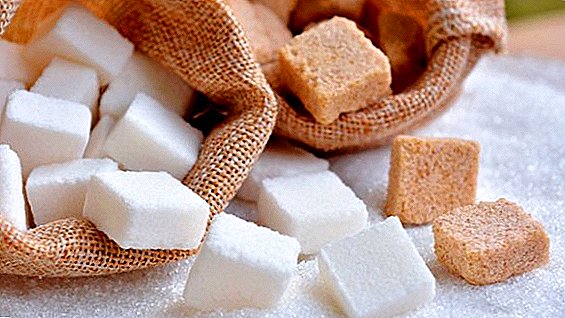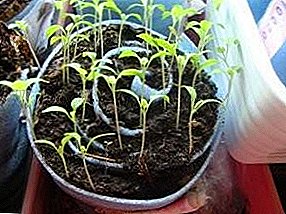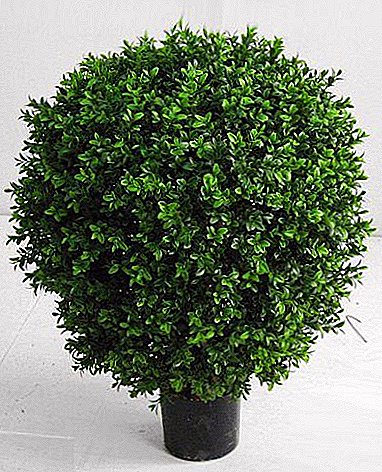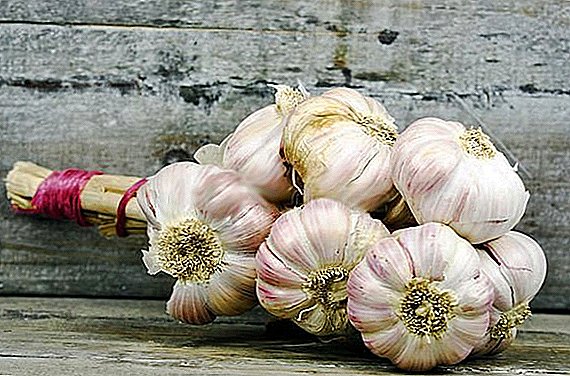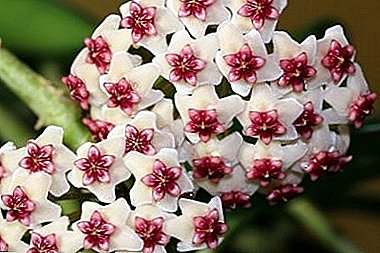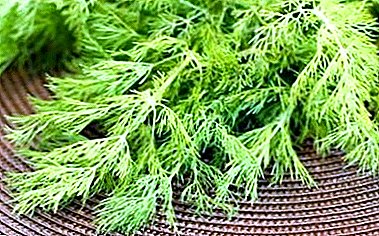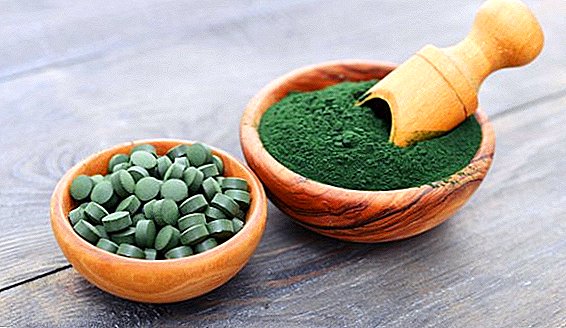 Many plants with valuable biochemical composition are used as natural medicines. Spirulina seaweed, which has a rich and harmonious combination of amino acids, vitamins and minerals, rightfully occupied its niche in this area. This unique plant is almost the only one that has managed to live on our planet for millions of years unchanged. Let's take a closer look at it.
Many plants with valuable biochemical composition are used as natural medicines. Spirulina seaweed, which has a rich and harmonious combination of amino acids, vitamins and minerals, rightfully occupied its niche in this area. This unique plant is almost the only one that has managed to live on our planet for millions of years unchanged. Let's take a closer look at it.
Botanical description
Spirulina - a representative of the genus of blue-green unicellular algae (cyanobacteria), under the microscope has the shape of a coiled spiral. The alga has a rich dark green color and lives in the natural environment only in a few lakes - African Chad, Chinese Chinhae and South American Texcoco. Therefore, spirulina is actively cultivated, its large industrial producers are located in many countries, including the USA, India, China, Thailand, and Taiwan.
Chemical composition
Spirulina has a uniquely high content of protein, iron and vitamins of group B. Its composition:
- proteins (about 60% of dry matter);
- lipids (about 7% dry matter);
- amino acids (18 of the existing 22);
- vitamins of groups A, C, D, E;
- B vitamins: B1 (thiamine), B2 (riboflavin), B3 (nicotinamide), B6 (pyridoxine), B9 (folic acid);
- minerals: iron, calcium, potassium, sodium, chromium, copper, magnesium, manganese, zinc, phosphorus, selenium and iodine;
- antioxidants;
- chlorophyll.
Find out what is useful dried kelp.Among the acids, the presence of gamma-linolenic, alpha-linolenic, linoleic, stearidonic, eicosapentaenoic, docosahexaenoic and arachidonic acids can be noted. In addition, algae contains beta-carotene, zeaxanthin, chlorophyll a, xanthophyll, echinenone, canthaxanthin, beta cryptoxanthin, as well as ficobiliproteins with phycocyanin and allophycocyanin.
Important! Spirulina is the only source of the strongest antioxidant phytocyanin. And there is more protein in it than in red fish or quail eggs.
Energy value and calorie
In 100 grams of dry spirulina about 300 kcal. Despite the rather high caloric content, the product is considered dietary, because it is taken in small quantities.  100 grams of spirulina contains:
100 grams of spirulina contains:
- proteins - 60 g;
- fat - 5 g;
- carbohydrates - 20 g;
- fiber - the rest.
Read also how to care for aquatic plants.
Use: medicinal properties
- Chlorophyll boosts immunity and saturates all cells of the body with oxygen;
- glutamic acid is responsible for the nutrition of the brain and its activity;
- arginine helps to remove toxins from the body;
- inositol promotes normal liver function and healthy cholesterol levels;
- thiamine strengthens the nervous system and normalizes sleep;
- gamma-linolenic acid has a good effect on the condition of the joints;
- tyrosine slows down the aging process;
- high iron concentrations are beneficial for red blood cells;
- saturates the body with most of the necessary amino acids for man;
- has a powerful antioxidant effect;
- normalizes blood pressure, which improves the state of the cardiovascular system;
- It has a positive effect on the work of the digestive system, speeds up the metabolism;
- heals the skin, helps cell regeneration, has anti-inflammatory properties;
- improves vision and memory, improves overall body tone.

Application
Spirulina has found wide use as a food additive, in recipes of traditional medicine, in cosmetology and dietetics. In addition, it is used not only for humans, but is added to animal and fish food.
In medicine
The main use of spirulina is a biological additive in food. Algae are usually consumed in dry form in tablets, powder or flakes. It helps in the recovery of many organs and body functions, rejuvenates it, enriching it with valuable vitamins, minerals and amino acids. The supplement does not cure any particular organ, it affects the entire body as a whole, supplying it with oxygen, increasing its protective functions and energizing.  It is often prescribed for patients with type 2 diabetes: with regular use of spirulina, blood sugar levels significantly decrease. In addition, it is useful for arthritis, heart disease and is an excellent prevention of infectious diseases.
It is often prescribed for patients with type 2 diabetes: with regular use of spirulina, blood sugar levels significantly decrease. In addition, it is useful for arthritis, heart disease and is an excellent prevention of infectious diseases.
Important! Due to the absence of the cell membrane in spirulina, it is very quickly digested in the stomach, and the process of assimilation by the body takes no more than an hour.Spirulina, as it were, forces the whole body to be renewed, cleaned of slags and toxins and actively resist harmful viruses, bacteria and even stress. It is beneficial for the skin condition, helping in the fight against skin diseases - acne, eczema and others. In addition, its regular use helps relieve the symptoms of certain types of allergies, for example, to pollen. Spirulina also accelerates hair growth and returns them a healthy shine, it is enough to spend one or two courses of treatment with drugs based on it.
In case of diabetes, take marigold, Jerusalem artichoke, turnip, yucca, blueberry, white acacia, viburnum, creeping couch, dogwood, stevia, currant, cactus, orange, apricot, green onions, blueberries, beets, parsley, Chinese cabbage, aspen, chaff, and purple carrot.
In cooking
Spirulina is widely used as an additive to healthy foods - bars, bread rolls and even ice cream. In addition, its extract has a fairly resistant pigment, so that it is popular as a natural dye of food. Spirulina is added to salads and sauces, while its peculiar smell is interrupted by garlic, parsley and various seasonings.
In cosmetology
Algae has found its application in cosmetology: make it nourishing and rejuvenating masks. And thanks to a pronounced anti-inflammatory effect, masks from this alga are used for acne and boils. It is necessary to mix one tablespoon of spirulina with a small amount of boiled (not hot!) Water, apply on the skin for 10 minutes, then rinse with warm water. With severe acne, time can be doubled. For falling out, damaged and thin hair, a regenerating mask with spirulina is recommended. You need to mix in the same proportions egg yolk, brandy, honey and add a tablespoon of dry algae. The resulting mixture is applied to the hair for 20-30 minutes, and then rinse with warm water. This mask nourishes the hair, returning them the natural shine and strength.
Slimming
Normalization of metabolism is one of the main qualities of this wonder algae. Two tablets with this component, taken half an hour before breakfast, will help you in the fight against overweight. Due to the high nutritional value and the presence of phenylalanine in addition to losing weight, the appetite decreases, a feeling of satiety and fullness of energy comes.
To lose weight, eat carrots, cucumbers, nectarines, watermelons, artichokes, tomatoes, beans, pineapples and lemon.In addition, during the diet is especially important to maintain a high level of protein intake in the body, so that along with excess fat and not lose muscle mass. Spirulina will help to cope with this task, the protein content of which reaches 60%. By the way, in such loved slimming chicken breast and fish it is not more than 30%. Spirulina is so effective in losing weight that it is often included as an additive in bars, breads and other dietary products.
Did you know? About 30 years ago, the US National Aeronautical Agency and the European Space Agency chose spirulina as one of the main products for cultivation during long flights. It speaks of her undoubtedlyth value for the human body.
Contraindications
Spirulina can not be used for people with autoimmune diseases, because it helps to increase immunity, and in these patients it is already hyperactive.  It:
It:
- multiple sclerosis;
- lupus;
- rheumatoid arthritis.
Caution should be people with the following ailments:
- hypertension, heart failure;
- liver and kidney disease;
- disruption of the thyroid gland;
- heart attacks, strokes;
- peptic ulcer, internal bleeding.
 It should also be noted that spirulina can cause allergies, so people who are prone to allergic reactions should be especially careful and introduce this supplement gradually, watching the reaction of the body. In case of nausea, diarrhea, edema, itching, headache, or other side effects, you should immediately stop taking spirulina and seek medical help.
It should also be noted that spirulina can cause allergies, so people who are prone to allergic reactions should be especially careful and introduce this supplement gradually, watching the reaction of the body. In case of nausea, diarrhea, edema, itching, headache, or other side effects, you should immediately stop taking spirulina and seek medical help.Procurement and storage conditions
Spirulina is the product that is extremely difficult to grow at home, because its growth requires the maintenance of a specific composition of water. The alga very quickly deteriorates, and in poor quality or overdue microcystins may be present, causing gastrointestinal disorders, and, in the long run, extremely serious liver diseases. In addition, there are cases of contamination of spirulina with heavy metals such as lead, mercury and arsenic - especially for cheap Chinese tablets and powders.
Did you know? In 2011, studies were conducted during which people of retirement age were given spirulina. Three months later, subjects showed an increase in the number of white blood cells in the blood and, as a result, increased immunity.Therefore, the best preparation of this miracle algae trust trusted and well-proven in the market specialists and store it, strictly following the instructions. But if you decide to grow spirulina yourself, then further ripe algae are collected from the surface of the water, laid out on a ventilated place (can be under the sun) and dried. Dried spirulina is ground into powder and stored for two to three years in a dry and dark place, preferably in a dark glass container. You can also freeze fresh spirulina: the shelf life is two years. Secondary freezing is not allowed!

How to use
Spirulina is available in the form of powder, tablets or flakes. The powder has a higher concentration of biologically active substances, and it is convenient to add it to different dishes or drinks. One tablespoon of spirulina per glass of juice, cocktail, yogurt or a portion of salad will certainly bring you a charge of vigor and energy.
However, keep in mind that during heat treatment a significant part of valuable elements is lost, so do not add spirulina, for example, in hot tea. Some people do not tolerate the characteristic smell of algae - in this case, it can be added to vegetable or fruit juice, it will block its flavor as much as possible. For therapeutic and prophylactic purposes, spirulina is usually taken in a course of 1-3 months.  It is best to use it before meals, drinking plenty of water without gas. In diseases of the digestive tract and the tendency to upset stomach is better to add to food. The dosage and duration of the course must be selected individually depending on the state of the body. But, as a rule, the prophylactic dose is three grams per day, for skin diseases - five grams per day, and in order to normalize the metabolism, you need to take 2-3 tablets before each meal.
It is best to use it before meals, drinking plenty of water without gas. In diseases of the digestive tract and the tendency to upset stomach is better to add to food. The dosage and duration of the course must be selected individually depending on the state of the body. But, as a rule, the prophylactic dose is three grams per day, for skin diseases - five grams per day, and in order to normalize the metabolism, you need to take 2-3 tablets before each meal.
Cost of
It is very important to buy algae only from proven and well-recommended producers. Despite its value and effectiveness, spirulina remains quite affordable nutritional supplement. The cost of domestic packaging of 50 tablets of spirulina, weighing 500 mg each, is 1.5-2 US dollars.  The American manufacturer will cost you much more: on average, for a package of 100 tablets of 750 mg you will have to pay about 19 US dollars. Prices of Indian or Czech manufacturers are approximately in the middle. The price of spirulina powder starts at $ 5 per 100 grams.
The American manufacturer will cost you much more: on average, for a package of 100 tablets of 750 mg you will have to pay about 19 US dollars. Prices of Indian or Czech manufacturers are approximately in the middle. The price of spirulina powder starts at $ 5 per 100 grams.
How to make a face mask at home
At home, you can quickly prepare a nourishing face mask with spirulina. To do this, you will need a tablespoon:
- spirulina;
- sour cream;
- oatmeal


